home vintage cameras index
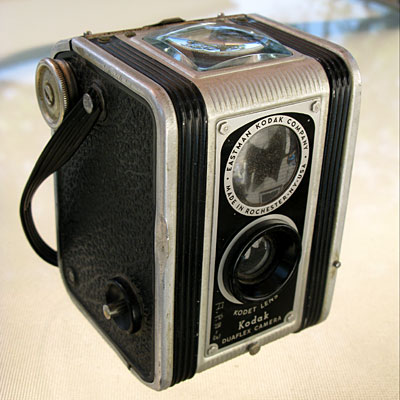
Kodak Duaflex

click image for patent overview

Click and Drag image to view full 1940 Census entry
The patent for the orginal Duaflex was filed by Hutchison on March 15, 1945. The camera featured, along with the large and brilliant finder, a simple meniscus lens with a focal length of approximately 70mm. Like all the medium format Kodaks of the era, the Duaflex could only accomodate 620 roll film. The modular construction and the metal, bakelite and glass materials were also typically well grounded in the Kodak design tradition. What was innovative in Hutchison's design for the Duaflex was not the basic feature set shared with many other cameras of the time, but rather the construction methodology that produced a reliable snapshot machine at a modest cost of manufacture. How that was to be accomplished is laid out in great detail in the patent abstract.
Subsequent Duaflex models which included the designations II, III and IV added numerous features to the basic design including a flip-up viewfinder hood, a double-exposure prevention module, variable aperture and in the III-model a multi-element and fully focusable lens. All models, however, retained Hutchison's original basic box camera shutter design with its plunger-style shutter release button. The shutter was factory-set to a speed of about 1/30 sec. plus a "Bulb" setting, and it was wired for synchronization to a flash unit which plugged into the side of the camera opposite the shutter button.
I have had opportunities to handle all models of the Duaflex, but I particularly like the simplicity and integrity of Hutchison's orginal 1947 design. I've only put one roll of film through the camera as of this writing, but I'm looking forward to further exploring the capabilities of this interesting little camera.
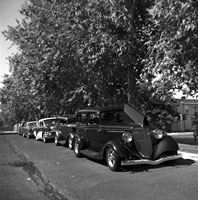
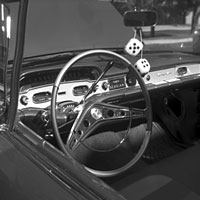
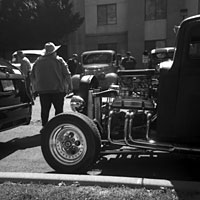
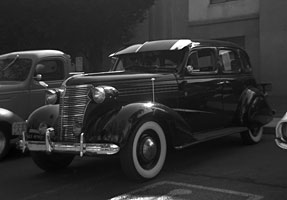
home vintage cameras index
 © mike connealy
© mike connealy